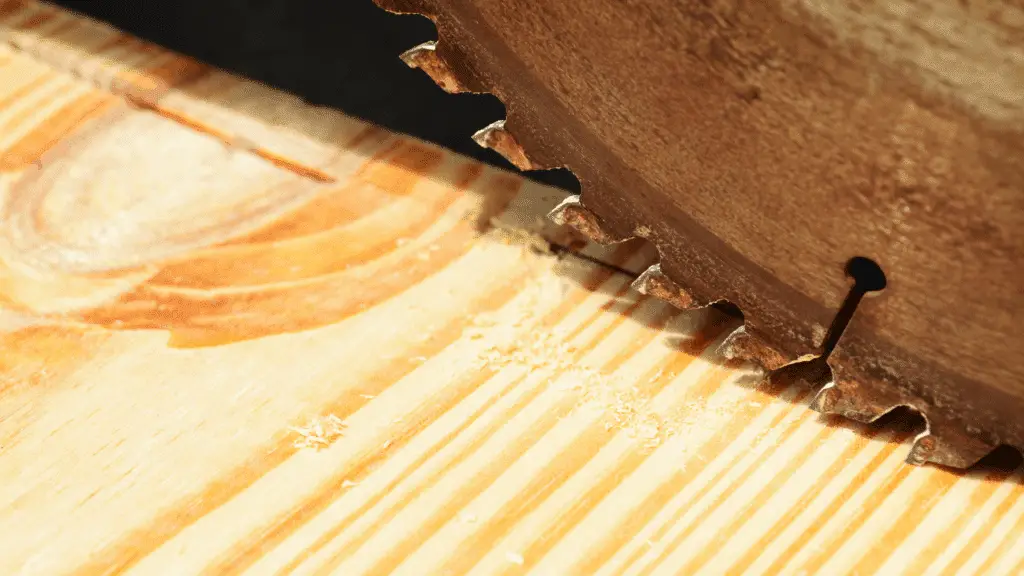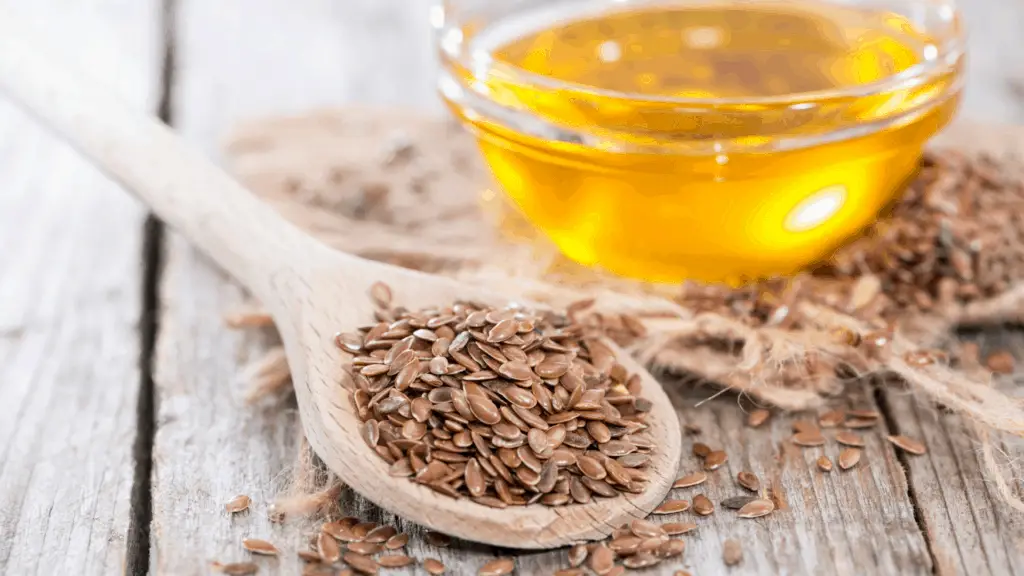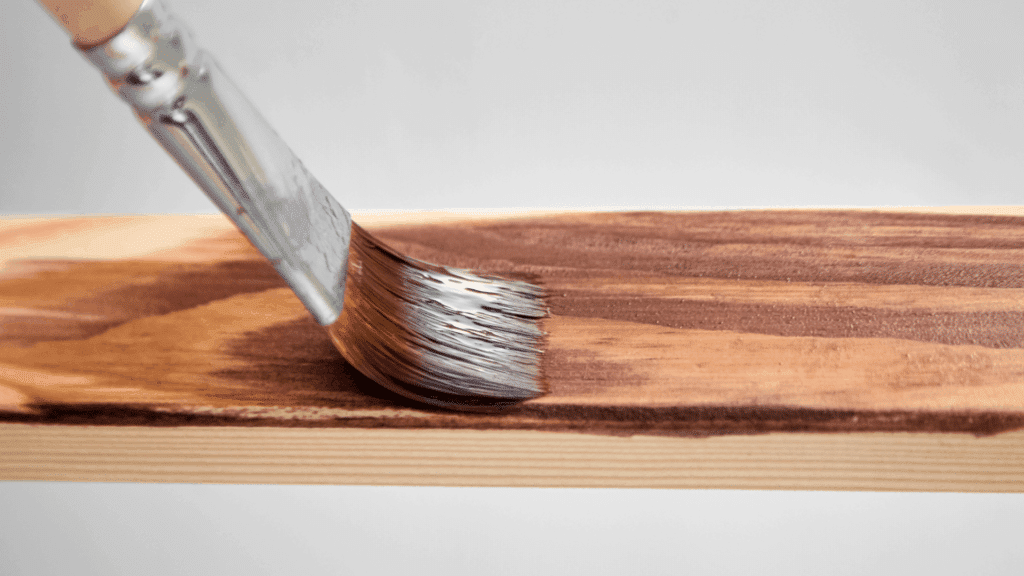Whether you’re manufacturing and selling timber bundles or buying a few pieces for a DIY project, it’s important to prevent cracks. Timber is prone to cracks because there’s a lot of pressure that builds and warps during temperature and moisture adjustments. Fortunately, it’s relatively easy to keep it in high-quality condition.
To prevent timber from cracking, acclimate the wood by storing it in a shady area, then let the timber check to relieve the pressure. Seal the edges to prevent warping, apply linseed oil before working with the timber, and add a UV-resistant coat if it’s going to be used outdoors.
Throughout this article, you’ll also learn the following info about preventing timber from cracking:
- Step-by-step instructions to preserve timber for many months and years
- Different products to use for your timber’s built-up pressure
- Proper storage techniques for the best results
Acclimate the Wood
It’s essential to let the wood acclimate before building, cutting, or gluing it. Unless the wood is locally sourced and acclimated before you bring it home, it’s probably from several miles away. Wood is prone to warping and splitting when it’s exposed to temperature, humidity, and elevation changes.
The good news is acclimating timber is much easier than you might think. Follow these instructions:
- According to Mataverde Decking, you should leave timber outdoors in a shady area to let it adjust to the climate. Never leave it in direct sunlight, or it’ll warp and crack in as little as a couple of hours. Leaving timber in the shade will prevent sun damage without limiting exposure to the prevailing elements.
- Elevate the wood to lift it off the ground. You don’t want mites, dirt, or debris getting all over brand-new timber. You can raise timber with anything that has enough space to safely secure it without it leaning or falling. Wood needs to sit horizontally to prevent warping.
- Space each piece of wood so both ends are exposed. Proper airflow relieves stress built-up inside the planks. It also prevents pressure cracks from excess weight. For best results, don’t stack timber. If you have to, limit it to three to five planks per stack to allow for ventilation.
Let the Timber Naturally Check
Checking is a process that causes small cracks throughout the timber. It’s a natural process caused by pressure building up after wood is cut. You’ve probably noticed checking in almost every piece of timber you’ve come across. Some checks are small, and others are massive. It’s essential to prevent big cracks by following all of the suggestions found throughout this page.
To let timber naturally check, all you have to do is let it acclimate before you build. If you cut, glue, and drill the planks before they’re checked, they’re much more likely to split and break apart. After a couple of days of acclimation, your timber will be good to go. Most checking happens along the edges, so we’ll cover a few helpful tricks in the following sections.
Seal the Edges
Timber is sealed along the exposed edges because they’re the most common area for splitting and breaking. Look at the end of the wood to see if there are stress fractures. As mentioned in the previous subheading, a few checks are okay. However, it’s best to treat the timber as soon as possible to limit large cracks.
- Prevents up to 90% of end checking (drying splits), improves yield with less waste
- Reduces blue stain and sapstain in logs
- Water-based, Non-hazardous, No solvents, soap & water clean-up
Last update on 2023-06-12 at 15:11 / Affiliate links / Images from Amazon Product Advertising API
Seal the edges with a natural wood sealant. ANCHORSEAL Classic Log & Lumber End Sealer is an excellent choice because it’s made out of wax. It prevents water damage and UV-ray penetration to keep your timber in top condition. One gallon (3.78 liters) of this end sealer goes a long way.
Create Relief Slots in the Wood
A lot of timber pressure follows the grain to the edges, where it cracks and warps. Sadly, it results in ruined planks that won’t go back to their original dimensions. You’ve probably seen this issue in timber that won’t stay flat or level. Cutting relief slots removes the pressure and keeps the wood nice and flat.

Mcilvain explains you can kerf timber to make slots along the outer edges. Kerf is a term that refers to unique cuts made to relieve pressure, but these slits are easily hidden, thanks to proper building techniques.
Consider Paintable Wax
ANCHORSEAL is a fantastic wax product, as you read above. It prevents water from getting through the cracks. Wood is durable, but it’s susceptible to water damage more than most building materials. When water gets in the timber cracks, it expands and warps the wood, causing it to lose its shape and break apart.
Paintable wax bounces water off the wood. Although the solution mentioned is designed as an end sealer, you can use plenty of wood waxes to preserve your timber. Use a putty knife to remove wax once you’re ready to build with it. Many people use waxed timber without removing the substance since it’s excellent for outdoor use.
Use Linseed Oil
WikiHow suggests boiling linseed oil and brushing it on the wood from end to end. Linseed oil soaks into timber’s porous surface to fight against splitting edges, checking, and humidity. Moisture tends to soak into the wood, making it unusable. By applying linseed oil, your wood won’t be harmed by the ambient humidity inside or outside.

Boiling linseed oil allows it to seep into the wood much easier. Rather than coating the outside, it soaks into the center of the timber. It’s much more of an all-around protective substance than an outer coating, which is why countless builders use boiled linseed oil. It’s found in several woodworking products, too.
Never Store Timber in Direct Sunlight
Much like humidity and water, sunshine is an enemy of timber. It warps its shape, causing massive stress fractures. If you’ve been to an old lumber yard, you’ve probably seen dozens of misshapen wood planks with curved edges, cracks, and many other issues. Temperature adjustments, including cold nights, negatively affect timber’s cellular structure.
Instead, store wood in a shed, garage, or shaded area. You can use tarps and canopy tents or wide umbrellas to limit sunlight exposure. Remember to let your timber planks have open edges, so they receive adequate airflow before you use them.
Apply a UV-Resistant Coat
As you read above, sunshine is bad for wood. The UV rays are responsible for most of the damage, though the temperature fluctuations aren’t welcome, either. You can apply a UV-resistant coat with a brush to limit direct sunlight damage. If you don’t have access to indoor coverage, these applications can make a world of difference.

Marketinia states you can add UV-inhibitors before or after building. However, it’s best to use them as soon as possible to prevent checking (after you’ve allowed a few days of natural cracks). If you’re storing wood outdoors, use wax, boiled linseed oil, or another form of treatment to keep your timber in good condition. There’s no reason to expose it to the elements if you don’t have to.
Conclusion
Now that you know how to stop timber from cracking, you can preserve all wood types for many years to come. As long as you have wax, linseed oil, or UV-resistant paint, your timber will stay like new. Remember to store it out of direct sunlight to prevent excessive checking and cracking.
- Consider letting the wood check to relieve pressure.
- Relief slots stop warping and splitting at the edges.
- Acclimate the wood by leaving it elevated in a shady area outdoors for maximum airflow.
- Timber is bound to crack, but you can control the severity.
